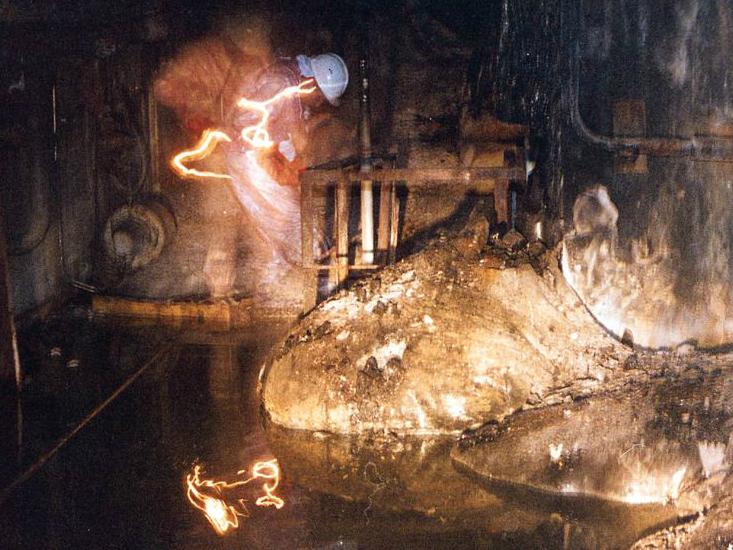Big Risk - Little Outcome
In my years of surfing the internet, I have come across images that just make you think, “How did they manage to take that?” Or, “Would they really risk their life for one photo?” It’s almost unbelievable how high standards are for quality pictures nowadays, whether it be for a minor scientific bragging right or a few likes on Facebook. Nevertheless, people come in almost arms-length from death to capture these breath-taking photos.
.jpg) |
"Elephant's Foot." Rare Historical Photos. RHP, n.d. Web. 2 July 2014. <http://rarehistoricalphotos.com/ the-elephant-foot-of-the-chernobyl-disaster-1986/>. |
 |
| "Elephant's Foot." Nautil. Kyle Hill, n.d. Web. 4 Dec. 2013. <http://nautil.us/blog/ chernobyls-hot-mess-the-elephants-foot-is-still-lethal>. |
No, this man is not on fire or being electrocuted. the radiation emitting from the Elephant's Foot is damaging the camera film and producing these ember coloured distortions in the photo. As you can see in the photo, the man at the back of the room is wearing a hardhat and a protective suit, but no visible face protection, which comes to show that the photographers were unaware of the dangers of the Elephant's Foot and the levels of radiation there in general, meaning the photographers unknowingly received heaps upon heaps of radiation for small scientific credit
 |
| "Image 56." Swallower of Lives. Mark, n.d. Web. 3 May 2013. <http://swalloweroflives.com/tag/la-paz/>. |
"The World's Most Dangerous Road" (Commonly known as "Death Road") in La Paz, Mexico served as a major route for cars and trucks to pass over the mountains of La Paz up until 2007 when they constructed a much safer route for automobiles. Now, "Death Road" is mainly used by cyclists and tour buses. Since 2007 there have been a recorded 24 deaths from cyclists alone, Still, today, tour guides are hosting cyclist runs through this treacherous road. In this photo, you can see 2 people hanging over the side of the cliff, sort of as if they are taunting death. As if the road wasn't dangerous enough, the people in the image proceed to go all out and snap this picture, probably as a way to get the reader/viewer more interested in the content.
In conclusion, although these images are cool and breath-taking to see, people's quality standards sometimes reach frightening high levels to where they put their lives at risk.
I agree although they do get bragging rights I don't think that it is worth the risk of getting close to being killed for the photo.
ReplyDeleteI believe that although the pictures are interesting the risk associated with them does not reflect the attention the photos receive.
ReplyDeleteI think that the last photo of death road to be rather insensitive because there were people who lost their loved ones to that road and these subjects are making light humor out of it.
ReplyDeleteAs someone who is risk averse, I do not understand why people risk their health and/or their lives. That said, I wonder how risky some of these actions are. Is going on "Death Road" anymore dangerous than driving every single day?
ReplyDelete